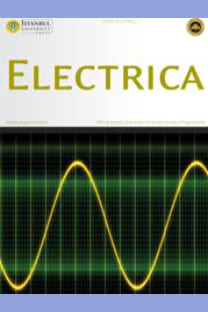Emotion Recognition via Galvanic Skin Response: Comparison of Machine Learning Algorithms and Feature Extraction Methods
Emotion Recognition via Galvanic Skin Response: Comparison of Machine Learning Algorithms and Feature Extraction Methods
Biomedical Signal Processing, Emotion Recognition, Pattern Recognition, Machine Learning, Physiological Signal, Galvanic Skin Response, Decision Tree Random Forest, k-Nearest Neighbors, Support Vector Machine,
___
- [1] N. Sebe, I.Cohen, and T. S. Huang, “Multimodal Emotion Recognition”, WSPC, June 18, 2004
- [2] P. Ekman, P., R.W.Levenson, , W.V. Friesen. Autonomic nervous system activity distinguishing among emotions. Science 221, 1208– 1210., 1983
- [3] Shimmer, “Measuring Emotion: Reactions To Media”, Dublin, Ireland, 2015
- ISSN: 2619-9831
- Yayın Aralığı: 3
- Başlangıç: 2001
- Yayıncı: İstanbul Üniversitesi-Cerrahpaşa
A New CPW-Fed Circularly Polarized Square Slot Antenna Design
Saeid KARAMZADEH, Hemrah HIVEHCHI
Fabrication of Ultamicro Carbon Fiber Electrode Probes for Detection of O2 and H2O2
Faruk AKTAŞ, Emre KAVUŞ, Yunus Kavuş
Ayşegül GÜVEN, Serhat Aladağ, Nazan Dolu, Hatice Özbek
SOLVING SUDOKU PUZZLE with NUMBERS RECOGNIZED by USING ARTIFICIAL NEURAL NETWORKS
Selcuk SEVGEN, Emel ARSLAN, Ruya SAMLI
BLOCKING OF WEAK SIGNAL PROPAGATION VIA AUTAPTIC TRANSMISSION IN SCALE-FREE NETWORKS
Veli BAYSAL, Ergin YILMAZ, Mahmut ÖZER
A NOVEL REVERSIBLE FAULT TOLERANT MICROPROCESSOR DESIGN IN AMS 0.35UM PROCESS
M. Hüsrev CILASUN, Mustafa ALTUN
